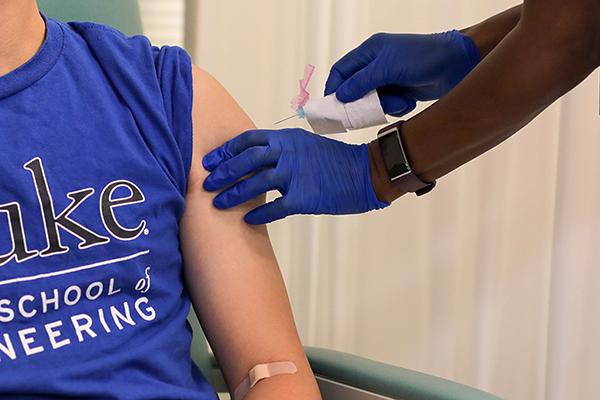
DURHAM, NC-- The CDC’s Immunization Safety Office, Duke Human Vaccine Institute and Kaiser Permanente Vaccine Study Center conducted a clinical study, funded by the CDC’s Clinical Immunization Safety Assessment (CISA) Project, to assess whether the risk of fever, and potentially febrile seizure, might be reduced by administering the quadrivalent inactivated influenza vaccine (IIV4) separately from the pneumococcal (PCV13) and diphtheria-tetanus-pertussis (DTaP) vaccines. The study was performed because previous observational studies have shown a small increased risk that administering inactivated influenza vaccine, PCV13, and DTaP at the same visit was associated with febrile seizures in children ages 6-23 months.
Febrile seizures are seizures caused by fevers that occur in children. Although uncommon, febrile seizures last one-two minutes and cause no permanent damage; only 5% of children will have febrile seizures in their lifetime. The CISA Project chose fever as the main outcome in this study because fever is common after vaccination.
During the 2017-2018 influenza season, study staff at the Duke Human Vaccine Institute and Kaiser Permanente Vaccine Study Center enrolled 221 children ages 12 through 16 months (206 were included in the analysis). The children were randomly assigned into one of two vaccination groups: simultaneous or sequential vaccination schedules. The simultaneous group included 99 children who received the PCV13, DTaP and IIV4 together at Visit 1 and returned two weeks later at Visit 2 for a follow up but with no additional vaccinations. The sequential group included 107 children who were administered PCV13 and DTaP at Visit 1 and returned two weeks later to receive IIV4 at Visit 2. The CISA project hypothesized that occurrence of fever (defined as a temperature of 38℃ or above) on 1-2 days after visit 1 or 2 combined would be higher in children vaccinated with the simultaneous vs. the sequential schedule.
In contrast to their hypothesis, the study concluded that fever in the two days post Visit 1 and 2 did not show a statistical difference in either group with 8.1% of children experiencing fever in the simultaneous group and 9.3% in the sequential group. Likewise, they did not detect a difference in fevers during days 3-8 after both study visits, with most fevers occurring after Visit 1. While there was no significant difference in fevers between the two groups, staff members did notice that a higher percentage of children in the simultaneous group received anti-fever medications (for any cause) in days 1-2 post Visit 1. Further noted, a higher percentage of parents reported that their child had fussiness or irritability in the eight days following visit 2 when they received IIV4.
Ultimately, this study suggests that delaying IIV4 administration by two weeks in children receiving DTaP and PCV13 does not reduce fever occurrence after vaccination, adding weight to the body of scientific evidence that supports the safety of simultaneous vaccination with IIV4, PCV13 and DTaP in young children.
The Advisory Committee on Immunization Practices (ACIP) will continue to recommend administering influenza vaccination at the same visit as other childhood vaccines because it allows children to be protected earlier from vaccine-preventable diseases and reduces the chance for missed vaccinations.